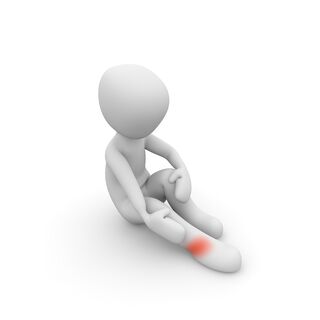Chronic Pain
Coping with Chronic Pain
Take control of your pain so it won't control you.
Posted April 5, 2021 Reviewed by Lybi Ma
Key points
- For some, chronic pain may have no cause; for others, it may start after an injury or as a result of other health conditions.
- It is not uncommon for patients with chronic pain to report that they feel misunderstood.
- A multimodal treatment approach is the cornerstone of helping patients.

Pain is a sensation that we all have felt at one point in time or another. It is defined as an uncomfortable feeling in your body that may be telling you that something is wrong. Generally speaking, when your body has an injury, pain persists until your body heals. After your body heals, the associated pain usually resolves. However, people who live with chronic pain experience a different outcome. Chronic pain is defined as any pain that lasts for three to six months or more. With chronic pain your body hurts for weeks, months or even years and depending on the severity of the pain it can be and often is very debilitating.
Let’s look at the statistics associated with chronic pain. First, chronic pain costs us as much as $635 billion a year when we factor in the costs to treat the pain as well as lost productivity. Second, chronic pain affects approximately 20 percent of adults throughout the world. Third, 70 percent of the people affected by chronic pain are women. And last, the leading cause of chronic pain is low back pain.
What causes chronic pain?
Now that we’ve defined the issue and explored a few epidemiologic fast facts, let’s talk about what actually causes chronic pain. For some people chronic pain may have no cause at all, but for other individuals chronic pain may start after an injury or as a result of other health conditions. Common causes of chronic pain include past injuries or surgeries, fibromyalgia, and nerve damage.
Chronic pain is tightly associated with mental health conditions such as anxiety and depression. Chronic pain can interfere with activities of daily living and functional status, leading to anger, frustration, sadness, and other emotional conditions. Studies have even shown a high association among undertreated chronic pain and suicide.[1] There is no more clear example of the interplay between mental health and physical health conditions than chronic pain. When people become stressed, their chronic pain may flare. And chronic pain in and of itself is a stressor. The link between emotions and pain can cause a vicious cycle.
Unfortunately, people living with chronic pain also face insurmountable challenges related to their pain conditions. It is not uncommon for patients with chronic pain to report that they feel misunderstood by their healthcare providers as well as family and friends. There is oftentimes stigma associated with chronic pain due to concerns of opioid addiction, fraudulent insurance or disability claims, co-occurring psychiatric conditions, and general lack of understanding and compassion. Additionally, chronic pain is often undertreated by healthcare providers, especially in certain patient populations (women, ethnic minorities, children, workmen’s compensation patients, and patients with co-occurring disabling conditions).
Effective ways to cope with pain
While it may not always be possible to eliminate chronic pain, there are many modalities to help improve functional status and enable effective coping of pain.
● Physical therapy and exercise
● Antidepressant medications and anticonvulsant medications
● Over the counter medications
● Biofeedback, meditation, and deep breathing relaxation techniques
● Cognitive behavioral therapy for pain
● Acupuncture and/or massage
● Support groups
● Supportive network of family, friends, and loved ones
We strongly advise against the use of opioids or narcotics for chronic pain. These habit-forming medications are potentially addictive and dangerous and should not be used for a prolonged period of time. The risk of physical dependence is high with this class of medications, even when prescribed appropriately and under careful physician supervision and monitoring. A multimodal treatment approach is the cornerstone of helping patients live healthier and more functional lives.
References
[1] Hooley, Jill M. “Chronic pain and suicide: understanding the association.” Current Pain Headache and Headache Reports, vol. 18, no. 8, 2014, pp. 435-442.


